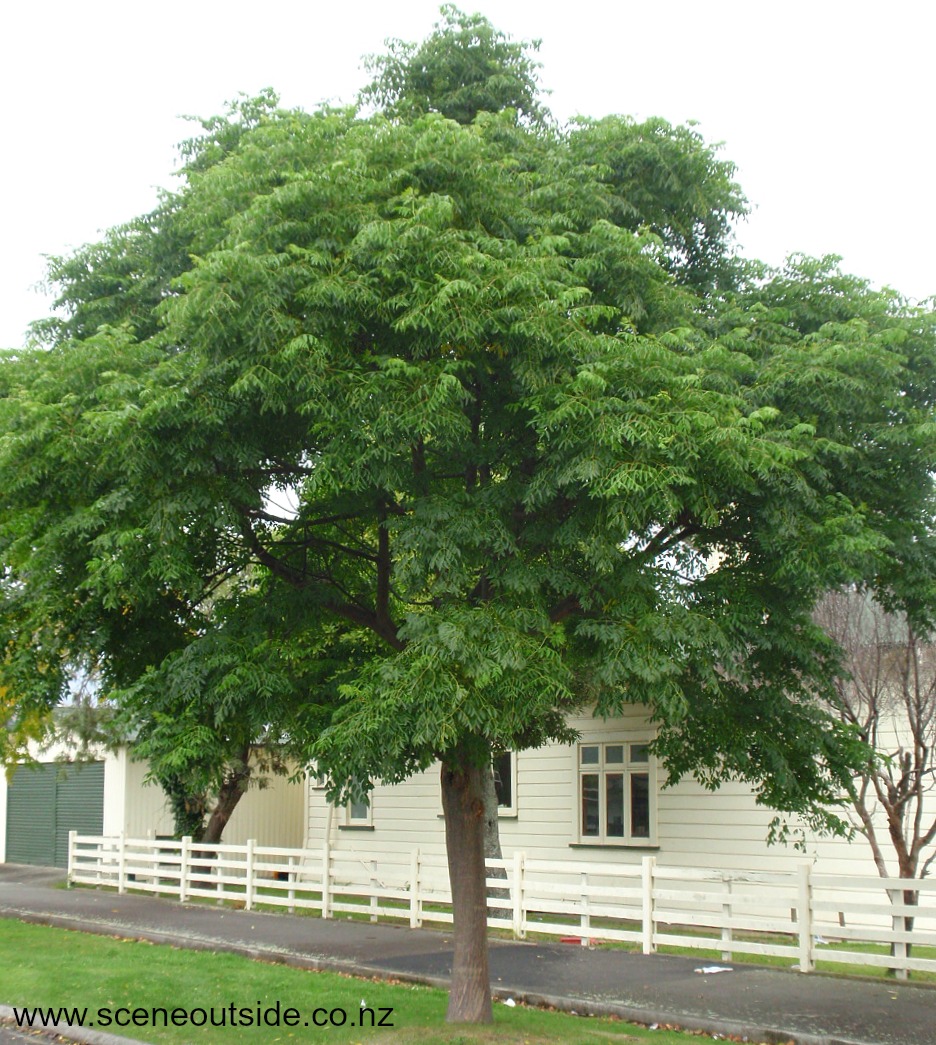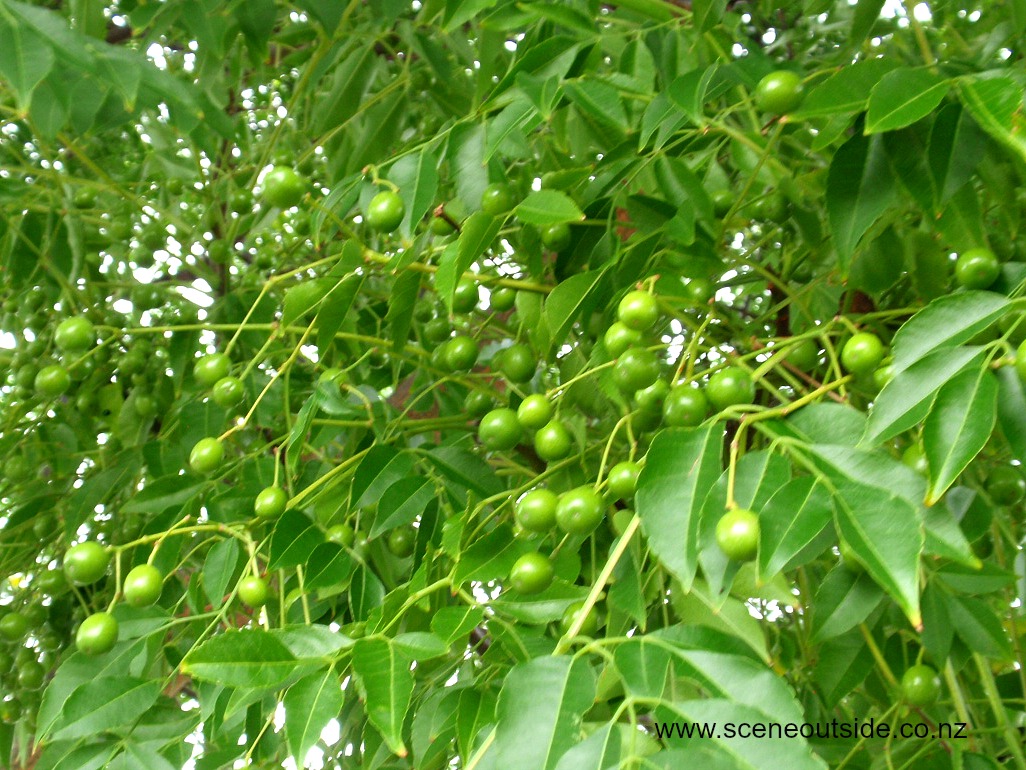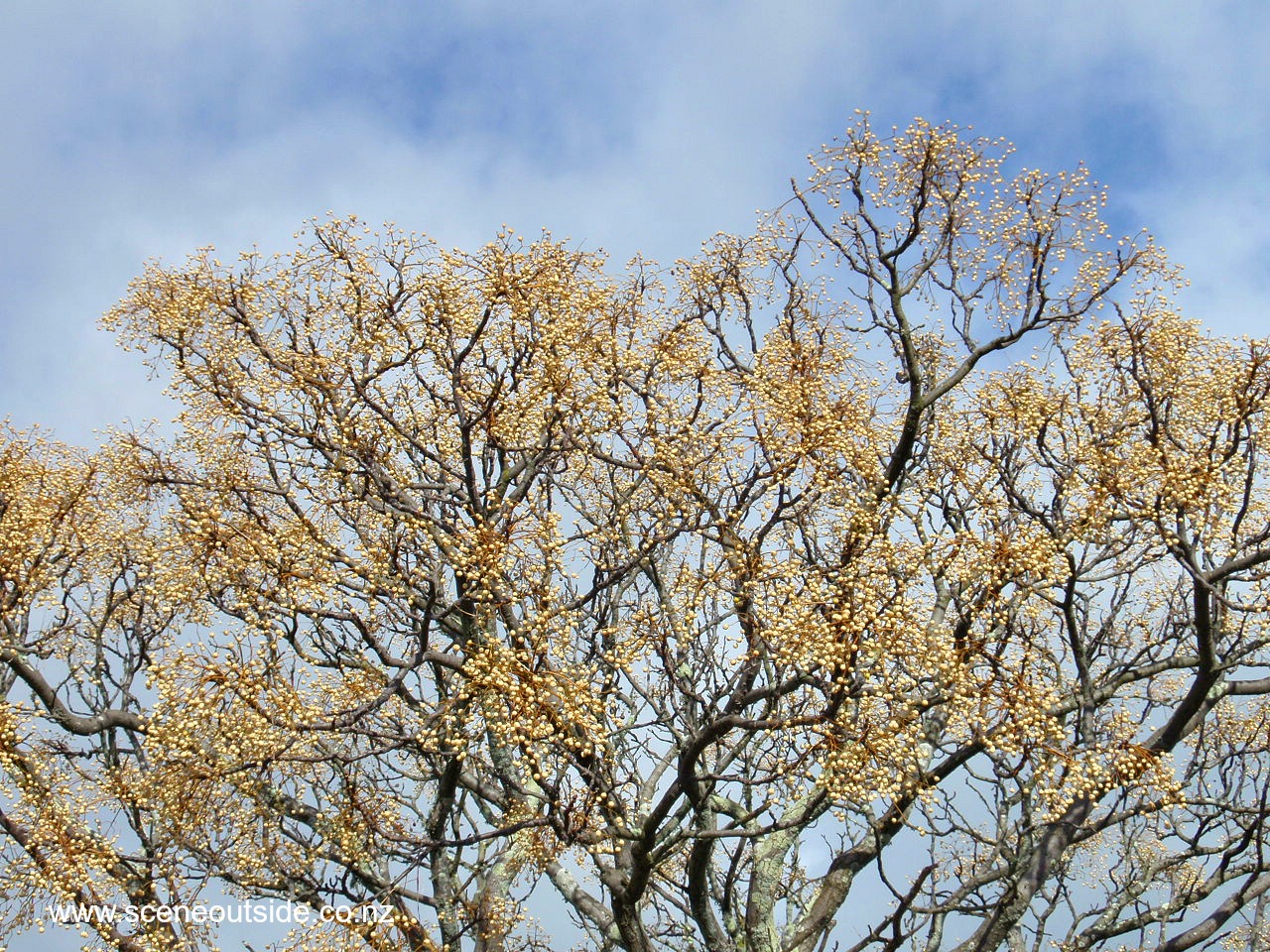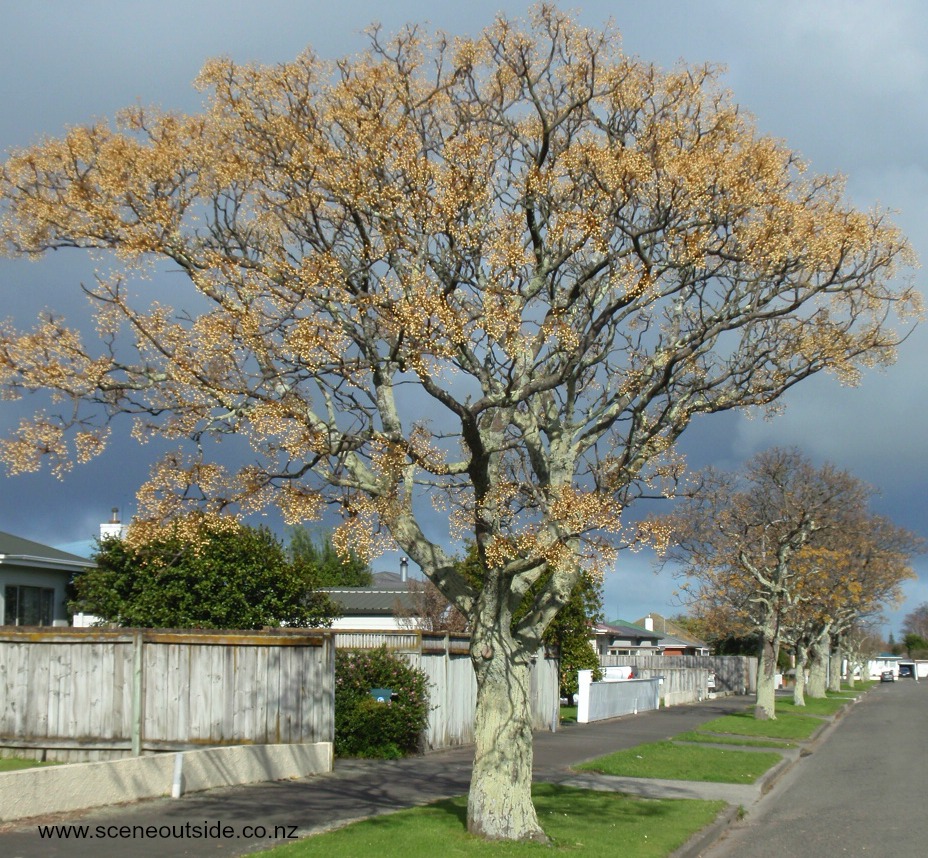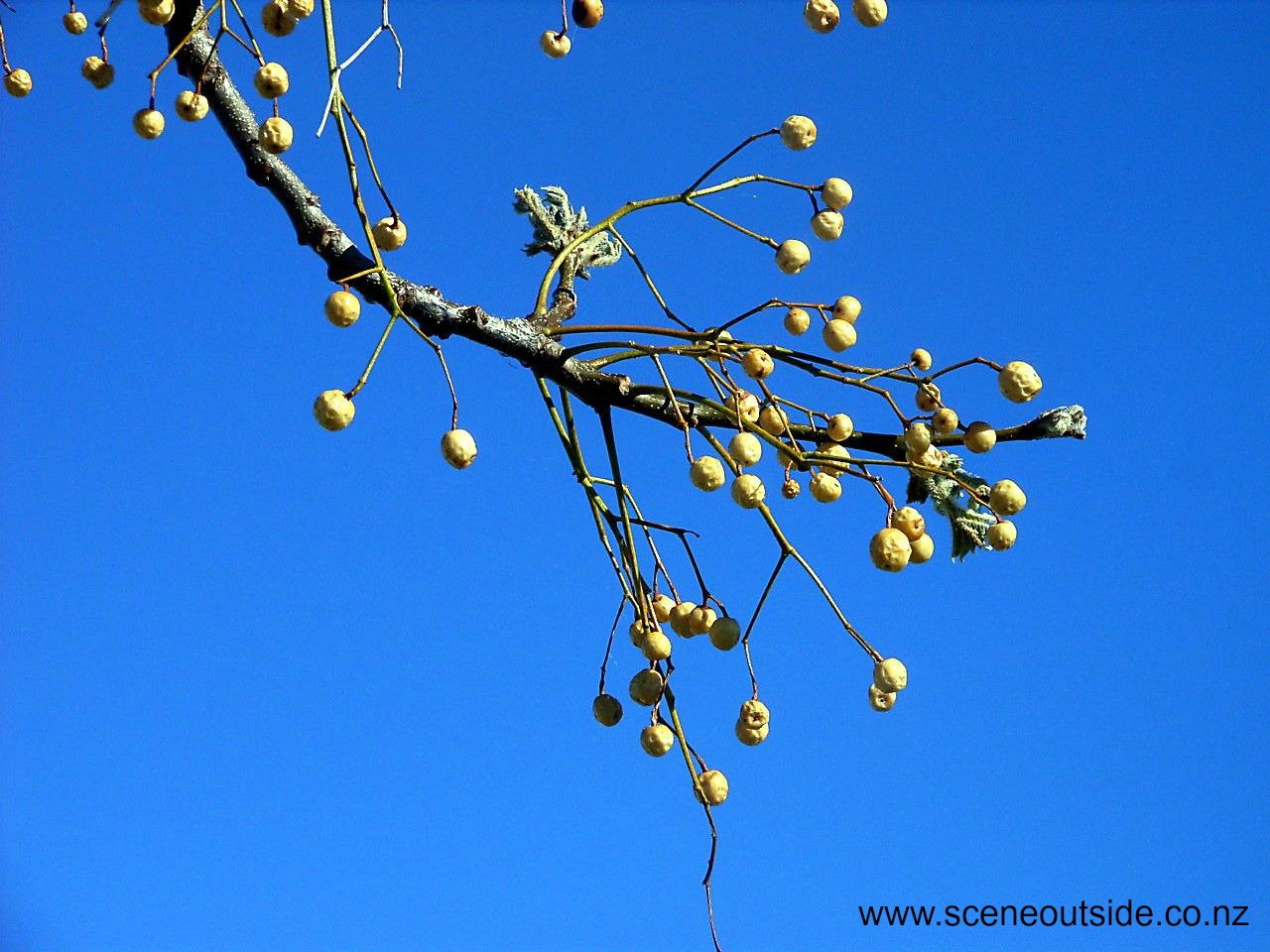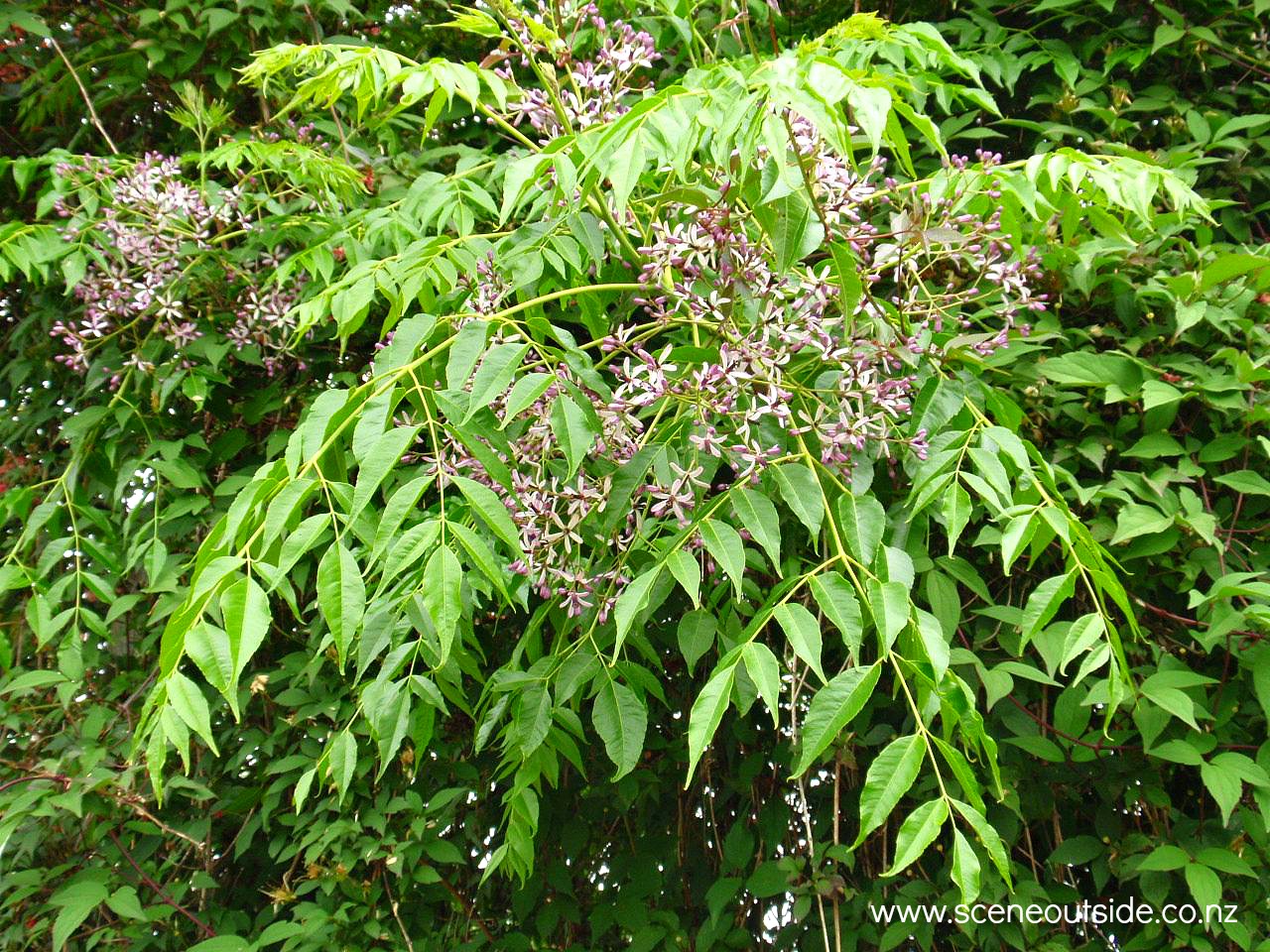





Melia azedarach
Persian lilac, Indian lilac, Cape lilac, bead tree, chinaberry tree, syringa berrytree, white cedar, Ceylon cedar, Texas umbrella, umbrella tree
Deciduous tree with a rounded canopy and glossy foliage, native to northern and eastern parts of Australia, and South East Asia. Belongs to the Mahogany family (Meliaceae). Leaves are 2-3 times odd-pinnately compound, to 50 cm long, and consist of 3-8 cm long leaflets with entire or lobed and/or toothed margins. Foliage is mid green, turning yellow in autumn. Small, pale purple to mauve and white, fragrant flowers in loose panicles during spring after the new leaves have emerged. Flowers are followed in autumn by 1.5 cm wide bead-like fruit, smooth and green initially, wrinkled and yellow when mature, remaining on the tree for a long time during winter. Has become invasive in some parts of the world. Poisonous fruits and foliage.
Synonyms (among many others): Melia australis, Melia japonica, Melia sempervirens.
Prefers a sunny position in well-draining soil. Copes well with partial shade. Adaptable to a wide range of conditions, but sensitive to waterlogged soils. Can handle considerable drought. Prune for shape to encourage a good branching structure. Suitable for coastal areas. Melia azedarach has a shallow root system and is best planted at some distance from hard surfaces. Tolerates moderate frosts (zones 8-12).
Attractive shade or specimen tree with graceful foliage, perfumed spring flowers, and a lovely display of yellow fruit in winter. When in flower, the canopy has a beautiful soft, smokey mauve appearance. Also suitable for erosion control and timber production.
Type of plant
Tree - DeciduousLandscape Use
shade tree, specimen tree for fragrant flowers, fruit, and foliage display, coastal gardens, dry areasSpecifications
- Temperature: Half hardy
- Light: Medium High
- Moisture: Low Medium
- Soil: Light Medium Heavy
- Wind tolerance: Average
- Coastal tolerance: High

